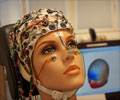Novel wireless brain pacemaker helps detect abnormal electrical currents that could trigger seizures or tremors in patients with epilepsy or Parkinson disease and delivers modulatory electric current to prevent their occurrence.
- Novel wireless brain pacemaker device termed WAND, an acronym for wireless artifact-free neuromodulation device has been developed
- WAND records brain electrical activity and simultaneously delivers a modulatory electrical impulse to prevent abnormal movements such as seizures or tremors
- Patients with chronic neurological conditions such as epilepsy or Parkinson’s disease can benefit from this new device
Additionally, it is a closed-loop system meaning it is able to simultaneously record and deliver electrical impulses in real time as stated above. Details of the WAND and how it functions appear in the journal Nature Biomedical Engineering.
Read More..
About the WAND in Brief
- WAND can record electrical activity at 128 different points in the brain compared to currently available closed loop systems which detects impulses only at eight points. The team demonstrated the working of WAND to detect and delay the occurrence of specific arm movements in rhesus macaques.
- Currently, closed loop systems either stop recording brain activity while delivering impulses or record at a different site other than where current is delivered. This closed loop system can be programmed for use in several clinical as well as research applications.
- The engineers who created the WAND have incorporated a chip design that enables recording of the full signal from both abnormal the brain current as well as the stimulation impulse delivered.
- The chip design helps to accurately record the brain electrical activity by subtracting the signals arising from the stimulatory electrical current
- Current devices can only record signals from the smaller brain waves and are overshadowed by the bigger stimulation pulses, making this kind of precise signal reconstruction impossible.
Testing the WAND in Humans
- The WAND was tested by the study team in human subjects to evaluate its efficacy.
- The subjects were asked to use a joystick to move a cursor on the computer screen to a specific location.
- Following an initial training period, the WAND was able to detect the electrical impulses in the brain that were generated as the subjects became ready to perform the above movement (shifting the cursor), and it delivered an appropriate electrical stimulation that delayed this motion.
Future Plans
For future research, the team plans to build intelligent devices with a closed loop system that can be gradually trained to treat the patient on its own without the constant need for a doctor’s intervention.Conclusion
The WAND is another example of how artificial intelligence could be applied in medicine to treat and improve the quality of life of patients.Reference:
- A wireless and artefact-free 128-channel neuromodulation device for closed-loop stimulation and recording in non-human primates - (http://dx.doi.org/10.1038/s41551-018-0323-x)
Source-Medindia
















